
In May and June 1835, the area which is now central and northern Melbourne was explored by John Batman, a leading member of the Port Phillip Association in Van Diemen's Land (now called Tasmania), who negotiated a purchase of 600,000 acres (2,400 km2) with eight Wurundjeri elders.[33][34] Batman selected a site on the northern bank of the Yarra River, declaring that "this will be the place for a village".[citation needed]

Batman then returned to Launceston in Tasmania. In early August 1835 a different group of settlers, including John Pascoe Fawkner, left Launceston on the ship Enterprize. John Pascoe Fawkner was forced to disembark at Georgetown, Tasmania because of outstanding debts. The remainder of the party continued and arrived at the mouth of the Yarra River on 15 August 1835. On 30 August 1835 the party disembarked and established a settlement at the site of the current Melbourne Immigration Museum. John Batman and his group arrived on 2 September 1835 and the two groups ultimately agreed to share the settlement.

Pre-European settlement

The area around Port Phillip and the Yarra valley, on which the city of Melbourne now stands, was the home of the Kulin people, an alliance of several language groups of Indigenous Australians, whose ancestors had lived in the area for an estimated 31,000 to 40,000 years.[1] At the time of European settlement the population of indigenous inhabitants was estimated to under 20,000.[2] who were hunter-gatherers from three tribes: the Wurundjeri, Boonwurrung and Wathaurong.[3]
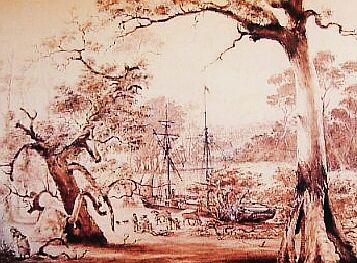
The area was an important meeting place for the clans of the Kulin, as well as a vital source of food and water.[4][5] The Kulin lived by fishing, hunting and gathering, and made a good living from the rich food sources of Port Phillip and the surrounding grasslands.[6]

Many of the Aboriginal people who live in Melbourne today are descended from aboriginal groups from other parts of Victoria and Australia. However, there are still people who identify as Wurundjeri and Boon warung descendants of the original people who occupied the area of Melbourne prior to European settlement. While there are few overt signs of the Aboriginal past in the Melbourne area, there are a wealth of sites of cultural and spiritual significance.[7][8]
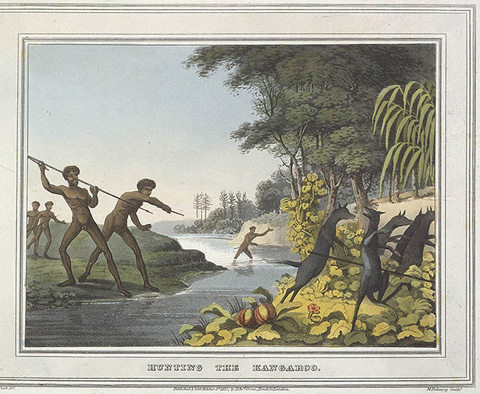
European exploration

In 1797, George Bass, in an open whaleboat with a crew of six, was the first European to enter what came to be called Bass Strait, the passage between the Australian mainland and Van Diemen's Land (Tasmania). He sailed westwards along what is now the coast of the Gippsland region of Victoria, as far west as Western Port. In 1802, John Murray in the Lady Nelson entered Port Phillip, and he was followed shortly after by Matthew Flinders.

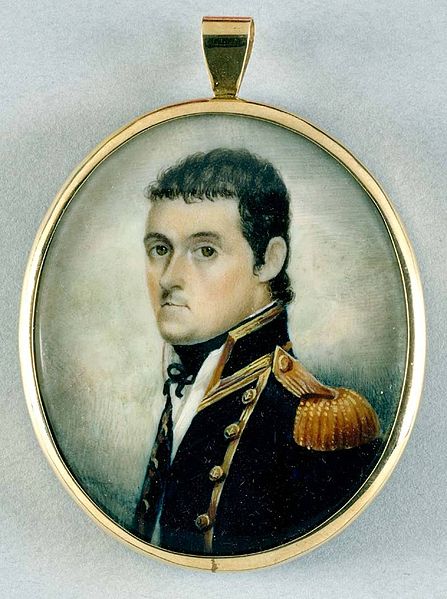
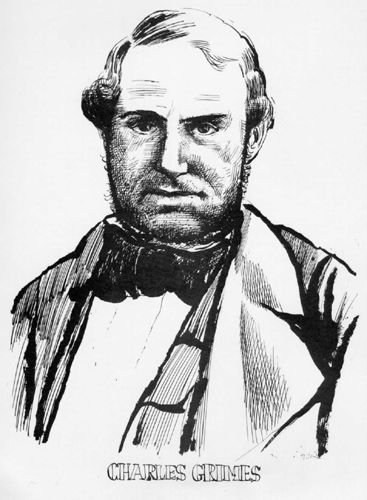
In 1803, Charles Grimes, the deputy surveyor-general of New South Wales, was sent to Port Phillip to survey the area.[9] Sailing on Cumberland, under the command of Acting Lieutenant Charles Robbins, the party entered Port Phillip on 20 January 1803. On 30 January, Grimes and his party landed at Frankston and met around thirty of Yarra River]]. On the next day, Grimes rowed up the river in a boat and explored what is now the Maribyrnong River for several miles. Returning to the Yarra he explored the river for several miles until he reached Dights Falls on 8 February. The journal[9] of another member of the party, James Flemming, has been preserved, and in it he several times refers to finding good soil. Although it was evidently a dry season Flemming, who was described by King as "very intelligent", thought from the appearance of the herbage that "there is not often so great a scarcity of water as at present". He suggested that the "most eligible place for a settlement I have seen is on the Freshwater (Yarra) River". Grimes returned to Sydney on 7 March 1803 and, in spite of Flemming's opinions, reported adversely against a settlement at Port Phillip.
Later in 1803 the British Governor of New South Wales, fearful that the French might try to occupy the Bass Strait area, sent Colonel David Collins with a party of 300 convicts to establish a settlement at Port Phillip. Collins arrived at the site of Sorrento, on the Mornington Peninsula, in October 1803, but was put off by the lack of fresh water.[10] In May 1804 Collins moved the settlement to Tasmania, establishing Hobart. The northern shores of Bass Strait were then left to a few whalers and sealers. Among the convicts at Sorrento was a boy called John Pascoe Fawkner, who would later come back to settle in the Melbourne area. Another was William Buckley who escaped to live with the Wathaurung people until 1835.
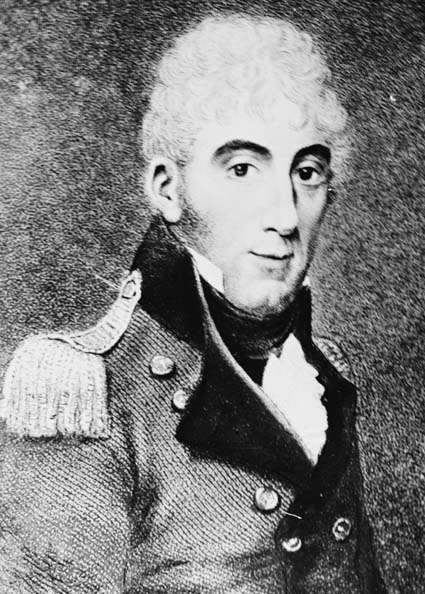


In 1824 Hamilton Hume and William Hovell came overland from New South Wales, failing to find Western Port, their destination, but instead reaching Corio Bay, where they found good grazing land. But it was another ten years before Edward Henty, a Tasmanian grazier, established an illegal sheep-run on crown land at Portland, in what is now western Victoria, in 1834.
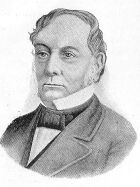


John Batman, a successful farmer in northern Tasmania, also desired more grazing land. He entered Port Phillip Bay on 29 May 1835, landing at Indented Head. Over the next week, he explored the area around the Bay, first at Corio Bay, near the present site of Geelong, and later moving up the Yarra and Maribyrnong rivers at the north of the Bay. He explored a large area in what is now the northern suburbs of Melbourne.
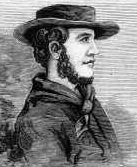
Foundation of town
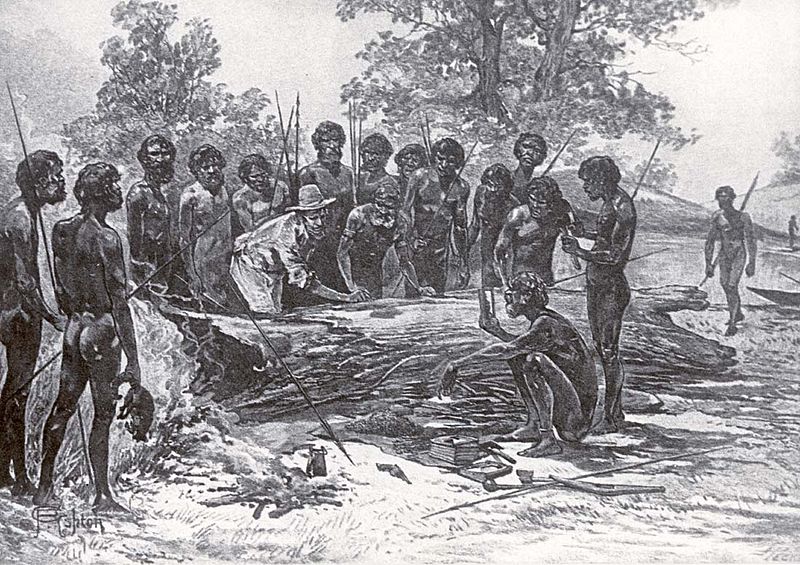
On 6 June 1835 Batman, as part of a Tasmanian business syndicate known as the Port Phillip Association signed a treaty with eight Wurundjeri elders,[4][5] in which he purported to buy 600,000 acres (2,400 km2) of land around Melbourne and another 100,000 acres (400 km2) around Geelong, on Corio Bay to the south-west. On 8 June he wrote in his journal: "So the boat went up the large river... and... I am glad to state about six miles up found the River all good water and very deep. This will be the place for a village." The last sentence later became famous as the "founding charter" of Melbourne.

Batman returned to Launceston in Tasmania (then known as Van Diemen's Land) and began plans to mount a large expedition to establish a settlement on the Yarra. But John Pascoe Fawkner, by now a businessman in Launceston, had the same idea. Fawkner bought a ship, the schooner Enterprize, which sailed on 4 August, with a party of intending settlers. When Batman's party reached the Yarra on 2 September, they were dismayed and angry to find Fawkner's people already in possession.


The two groups decided that there was plenty of land for everybody, and when Fawkner arrived on 16 October with another party of settlers, they agreed to parcel out land and not dispute who was there first. Both Batman and Fawkner settled in the new town.

Batman's Treaty with the Aborigines was annulled by the New South Wales government (which at the time governed all of eastern mainland Australia) on 26 August 1835 (and the annulment confirmed by the Colonial Office on 10 October 1835), but provided for compensation to the Association.[4] Although this meant the settlers were now trespassing on Crown land, the government reluctantly accepted the settlers' fait accompli and allowed the town to remain.

In September 1836, Governor Bourke established the Port Phillip District of New South Wales, though the borders had still not been determined, with the settlement as its administrative centre. (Bourke was authorized by London to establish a settlement in April 1836) Bourke also appointed Captain William Lonsdale as police magistrate, chief agent of the government and commandant of the district. Captain William Hobson (later Governor of New Zealand) was instructed to accompany Lonsdale, his family and public officers to Port Phillip.

The presence of a warship together with the Governor's agent indicated the Governor's intention to re-take control of the situation in Port Phillip. Lonsdale arrived at Port Phillip with his wife Martha, 7-month old daughter Alice and his one assigned servant, on board HMS Rattlesnake, commanded by Hobson.

They anchored at the south end of the Bay on 27 September 1836, where Hobson despatched a cutter for survey work, and by 29th had proceeded north and anchored off Point Gellibrand, Hobsons Bay, near the mouth of the Yarra River. Lonsdale landed unofficially, distributing the official proclamation of the establishment of the new settlement, and did the same the next day. On 1 October 1836 Lonsdale was formally rowed up the Yarra River and was met by John Batman and Dr Thompson and other assembled settlers.[11]


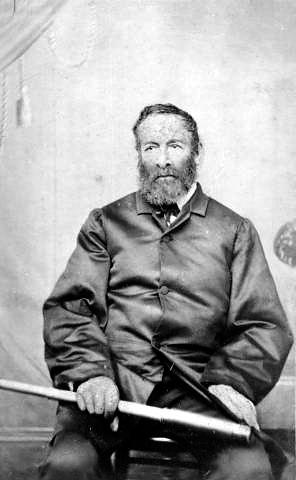
Bourke also commissioned Robert Hoddle to make the first plan for the town, completed on 25 March 1837, which came to be known as the Hoddle Grid.[12] The surveys were intended to prepare for land sales by public auction. Bourke visited Port Phillip in March 1837, confirmed Lonsdale's choice of a site for the new town and named it Melbourne, after the then British prime minister William Lamb, 2nd Viscount Melbourne, who resided in the village of Melbourne in Derbyshire. Before being officially named, the town had several interim names — including Batmania, Bearbrass, Bareport, Bareheep, Barehurp and Bareberp (in June 1835).[13][14][15] The General Post Office opened under that name on 13 April 1837.[16] Public auctions for land began in June 1837. The compensation of the Port Phillip Association were only recognised to the extent of £7,000, allowed as a reduction on the purchase price of land bought by the association. Most of the members sold their entitlements to Charles Swanston, an entrepreneur, banker and politician based in Hobart, Van Diemen's Land. The exclusive Melbourne Club was established at a gathering of 23 Victorian squatters and businessmen in 1838.
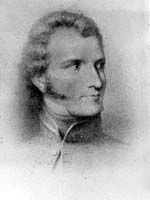
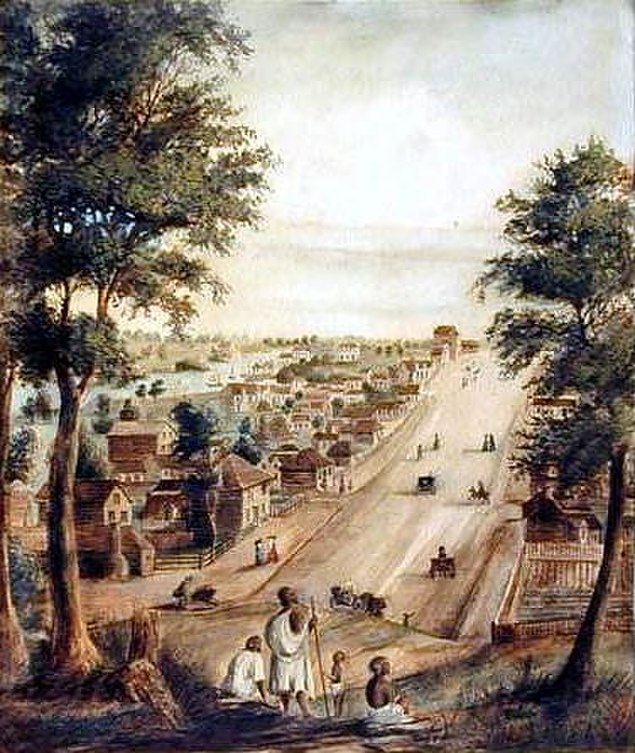

George Gipps became Governor of New South Wales in 1838. In February 1839, Charles La Trobe was appointed superintendent of the district; but La Trobe did not arrive in the settlement until October 1839.
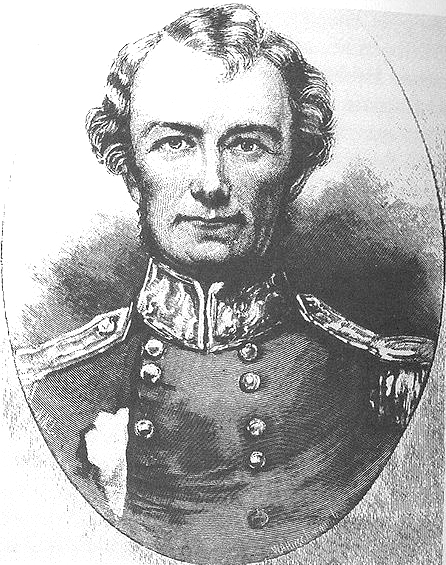
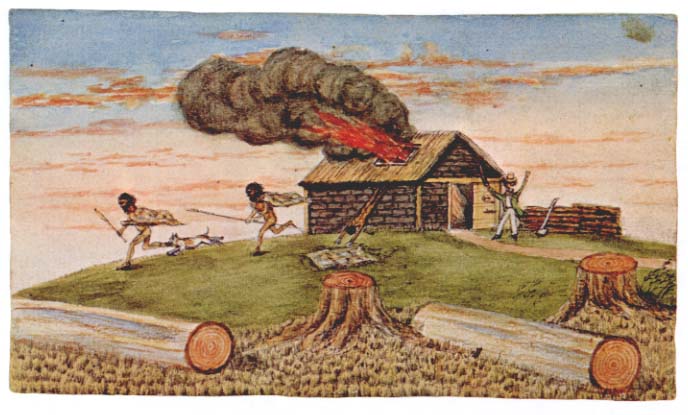
Though administratively inexperienced, La Trobe was a gifted man with artistic and scientific interests who did much to lay the foundations of Melbourne as a real city. La Trobe's most lasting contribution to the city was to reserve large areas as public parks: today these are the Treasury Gardens, the Carlton Gardens, the Flagstaff Gardens, Royal Park and the Royal Botanic Gardens.



A Separation Association had been formed in 1840 to agitate for Port Phillip District to become a separate colony, with its first petition for the separation being drafted by Henry Fyshe Gisborne and presented by him to Governor Gipps. The entire population of Port Philip in 1841 was 11,738.[17]
On 12 August 1842, Melbourne was incorporated as a "town" by Act 6 Victoria No. 7 of the Governor and Legislative Council of New South Wales.[18] On 25 June 1847, the City of Melbourne was declared by letters patent of Queen Victoria.[19]
In December 1842 Frederick Dalgety arrived in Melbourne and would soon be a merchant concentrating on 'the settlers' trade', providing merchandise for the squatters and buying their produce which he would ship to England. Richard Goldsbrough, a woolstapler, came to Melbourne in 1847. He bought a weatherboard building on the corner of Williams Street and Flinders Lane, and set up a business as a classer and packer of wool for sale in England. In 1850 he set up the first regular wool auction in Bourke St, Melbourne.
In 1843 there was a panic which was attributed to an influx of British capital being used for land speculations, with the money being deposited in banks at interest, lent to squatters, and its sudden withdrawal for the purpose of remitting to London in payment for immigration and other demands. The panic was also caused by low wool prices and the cessation of transportation.[20]
Early settlement

Melbourne began as a collection of tents and huts on the banks of the Yarra. The river was used for bathing and drinking water. The river had by the 1850s become quite polluted and was the cause of an epidemic of typhoid fever which hit the town resulting in many deaths.[21] Though the Melbourne City Council opened the first Melbourne City Baths on 9 January 1860,[22] people continued to swim and drink the river water.
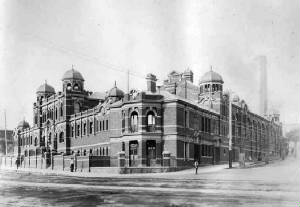
Until the building boom which followed the gold rushes, most of Melbourne was built of timber, and almost nothing from this period survives. Two exceptions are St James Old Cathedral (1839) in Collins St (now relocated to the Flagstaff Gardens), and St Francis Catholic Church (1841) in Elizabeth St. Suburban development had already begun. The first sale of Crown lands in St Kilda took place on 7 December 1842, and the wealthy began building houses by the seashore, and a port developing at Williamstown. In 1844, a bridge was built to span the Yarra River at Swanston Street. The bridge replaced the privately operated punts. The bridge was a privately built wooden trestle toll bridge.[23] In 1850, a government-built sandstone free bridge replaced the wooden bridge.


In 1848, Charles Perry became the first Anglican bishop for Melbourne,[24] and James Alipius Goold became the Catholic Bishop of Melbourne.


With the arrival of Europeans in the area, the local indigenous people were hard hit by introduced diseases, and their decline was hastened by mistreatment, alcohol and venereal disease.[5] There were also frontier conflicts such as the Battle of Yering in 1840.[25][26] Simon Wonga made moves to reclaim land for Kulin people to settle on in 1859, but they were not successful until 1863 when the surviving members of the Wurundjeri and other Woiwurrung speakers were given 'permissive occupancy' of Coranderrk Station, near Healesville and forcibly resettled.[5]



In July 1851 the successful agitation of the Port Phillip settlers led to the establishment of Victoria as a separate colony, and La Trobe became its first Lieutenant-Governor. In 1851 the white population of the whole Port Phillip District was still only 77,000, and only 23,000 people lived in Melbourne. Melbourne had already become a centre of Australia's wool export trade.

A few months after separation, gold was discovered at several locations around the colony, most notably at Ballarat and Bendigo. The ensuing gold rush radically transformed Victoria, and particularly Melbourne. During land speculation of the 1850s many stone and brick public and financial buildings were built.
1850s Gold Rush
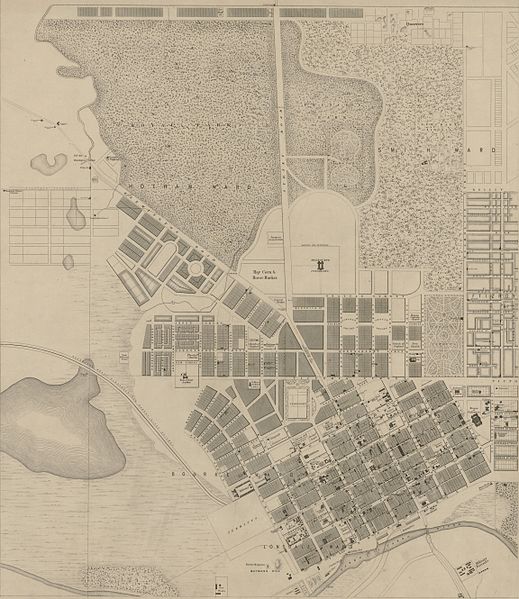
The discovery of gold led to a huge influx of people to Victoria, most of them arriving by sea at Melbourne. The town's population doubled within a year. In 1852, 75,000 people arrived in the colony and this, combined with a very high birthrate, led to rapid population growth (as well as the equally rapid dispossession of the Aboriginal populations in those areas of inland Victoria which had not already been cleared for sheep runs).

In 1853 work began on the Yan Yean Reservoir to provide water for Melbourne. Piped water started to flow in 1857. Victoria's population reached 400,000 in 1857 and 500,000 in 1860. As the easy gold ran out many of these people flooded into Melbourne or became a pool of unemployed in cities around Ballarat and Bendigo. There arose a huge wave of social unrest urging the opening of the lands in rural Victoria for small yeoman farming. In 1857 a Land Convention was held in Melbourne. Later a provisional government was formed by land hungry miners demanding land reform.
The accelerated population growth and the enormous wealth of the goldfields fuelled a boom which lasted for forty years, and ushered in the era known as "marvellous Melbourne." The city spread eastwards and northwards over the surrounding flat grasslands, and southwards down the eastern shore of Port Phillip. Wealthy new suburbs like South Yarra, Toorak, Kew and Malvern grew up, while the working classes settled in Richmond, Collingwood and Fitzroy.

The influx of educated gold seekers from England led to rapid growth of schools, churches, learned societies, libraries and art galleries. The first railway in Australia was built in Melbourne in 1854. Also in 1854, the government offered four religious groups land on which to build schools.[27] These included the Wesleyan Methodist Church,[28] and the Anglican Church.[29] These resulted in Wesley College and Melbourne Grammar School being built in St Kilda Road a few years later. The University of Melbourne was founded in 1855 and the State Library of Victoria in 1856. The foundation stone of St Patrick's Catholic Cathedral was laid in 1858 and that of St Paul's Anglican Cathedral in 1880. The Philosophical Institute of Victoria received a Royal Charter in 1859 and became the Royal Society of Victoria. In 1860 this Society assembled Victoria's only attempt at inland exploration, the Burke and Wills expedition.


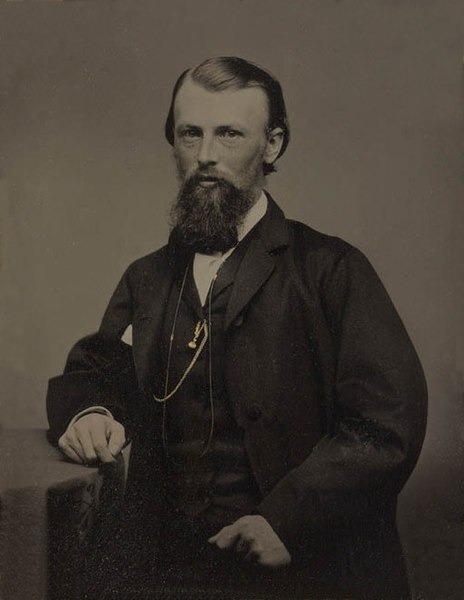
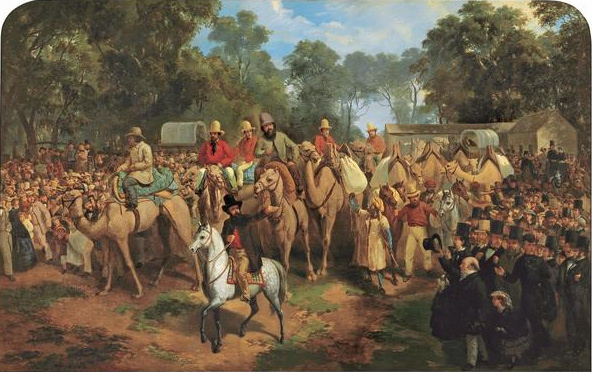
A Melbourne Town Council had been created in 1847, and one by one other suburbs also gained town status, complete with town councils and mayors. In 1851 a party-elected Legislative Council, dominated by squatter interests, opposed the notion of universal suffrage and the role of the Legislative Assembly. In December 1854 discontent with the licensing system on the goldfields led to the rising at the Eureka Stockade, one of only two armed rebellions in Australian history (the other being the Castle Hill convict rebellion of 1804).

In November 1856, Victoria was given a constitution and in the following year full responsible government with a two house Parliament. For Melbourne, the major consequence was the magnificent edifice of Parliament House, Melbourne, which was started in December 1855 and completed in stages between 1856 and 1929.
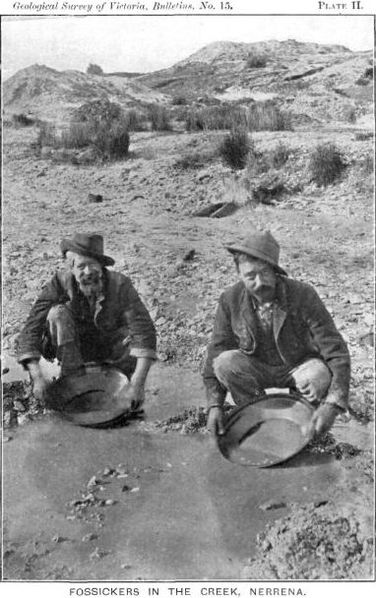
The boom fuelled by gold and wool lasted through the 1860s and '70s. Victoria suffered from an acute labour shortage despite its steady influx of migrants, and this pushed up wages until they were the highest in the world. Victoria was known as "the working man's paradise" in these years. The Stonemasons Union won the eight-hour day in 1856 and celebrated by building the enormous Melbourne Trades Hall in Carlton.

1880s and 1890s expansion

Melbourne's population reached 280,000 in 1880 and 490,000 in 1890. For a time it was the second-largest city in the British Empire, after London. In terms of area, Melbourne was already one of the largest cities in the world. Rather than building high-density apartment blocks like European cities, Melbourne expanded in all directions in the characteristic Australian suburban sprawl.
The middle classes[30] lived in detached villas on large blocks of land, while the working class lived in reasonably comfortable cottages in the northern and western suburbs, and older areas like Fitzroy and Collingwood became slums. Most of the new heavy industry was concentrated in the western suburbs. The wealthy built huge mansions beside the sea or in the picturesque Yarra Valley.
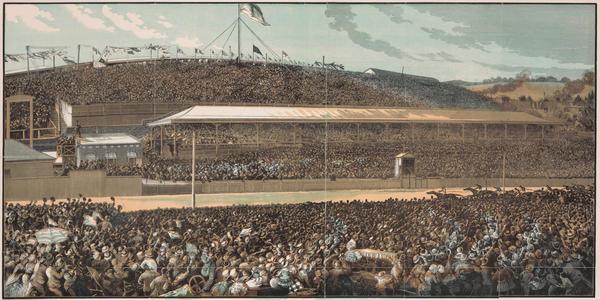
The new suburbs were serviced by networks of trains and trams which were among the largest and most modern in the world. Melbourne's civic pride was demonstrated by the huge edifice of the Royal Exhibition Building, built in 1880 to house the Melbourne International Exhibition.

In the 1880s the long boom culminated in a frenzy of speculation and rapid inflation of land prices known as the Land Boom. Governments shared in the wealth and ploughed money into urban infrastructure, particularly railways. Huge fortunes were built on speculation, and Victorian business and politics became notorious for corruption. English banks lent freely to colonial speculators, adding to the mountain of debt on which the boom was built.

1891 economic bust

In 1891 the inevitable happened: a spectacular crash brought the boom to an abrupt end. Banks and other businesses failed in large numbers, thousands of shareholders lost their money, tens of thousands of workers were put out of work. Although there are no reliable statistics, there was probably 20 percent unemployment in Melbourne throughout the 1890s.
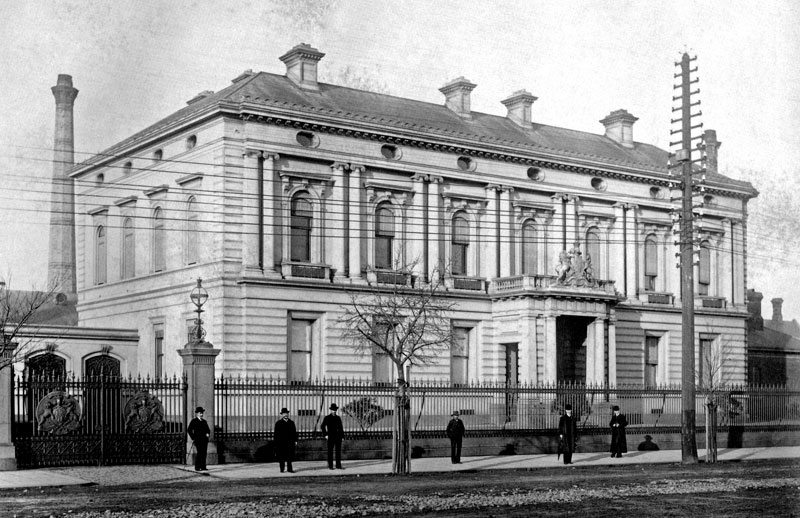
Melbourne had 490,000 people in 1890, and this figure scarcely changed for the next 15 years as a result of the crash and subsequent long slump. Immigration dried up, emigration to the goldfields of Western Australia and South Africa increased, and the high birthrate of the mid 19th century fell sharply and the city's growth continued, but very slowly.
Australia's capital: 1901-1927
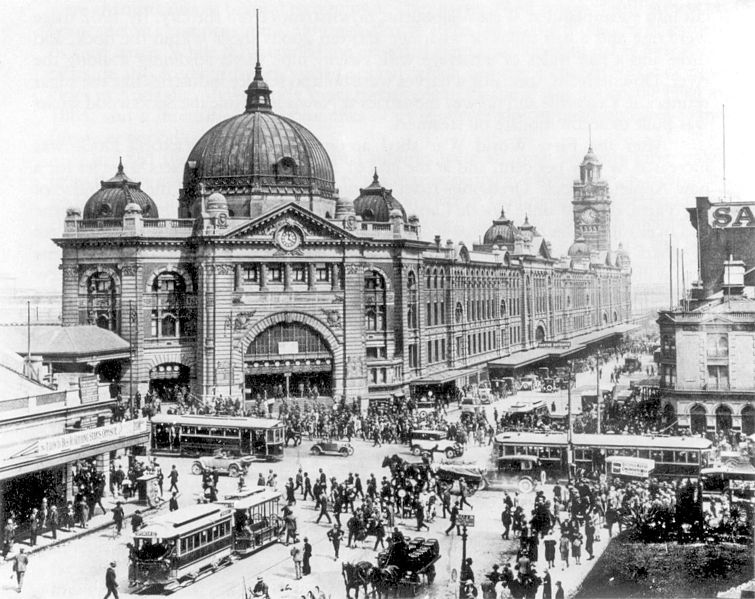
Melbourne's status as Australia's largest city lasted long enough, however, for it to become the seat of government of the new Commonwealth of Australia when the six colonies federated in 1901. Parliament House in Spring St was lent to the Parliament of Australia, while Victoria's Parliament found temporary accommodation in the Royal Exhibition Building.

The city's growth stalled, and by 1905 Sydney had resumed its place as Australia's largest city.
Not until about 1910 did economic growth resume, and Melbourne's population reached 670,000 by 1914. But the boom years did not return, and the level of wages remained far lower than it had been in the 1880s. As a result urban poverty became a feature of city life, and the slum areas of the inner industrial suburbs spread.
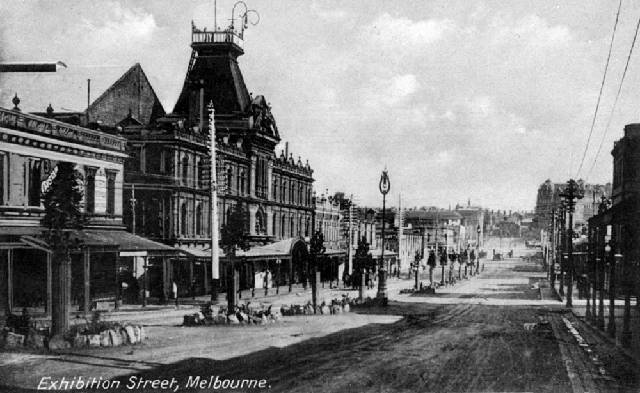
The period 1890-1925, can summarily described as : Depression 1890-95, with a panic In 1893. and a slight revival in 1895; Revival 1896, growing into prosperity from 1897 -1900. Recession 1901. growing 1902, into depression in 1903. Revival 1904. growing 1905. into prosperity 1906-07. Recession and depression 1908, with a rapid revival and prosperity 1909-12. Mild recession 1913; revival, recession, and depression in 1914. Revival, came at the end of 1915, and war activity 1916-18, ending in prosperity 1919-20. Recession at the end of 1920, depression in 1921, slow revival 1922 to mild prosperity 1923. Mild recession followed in 1924, with a revival and prosperity in 1925.[31]
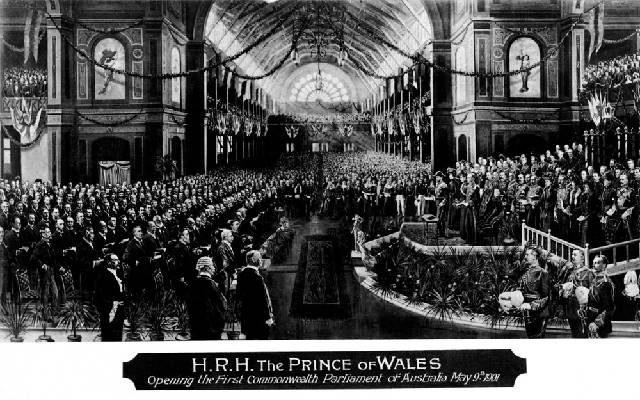
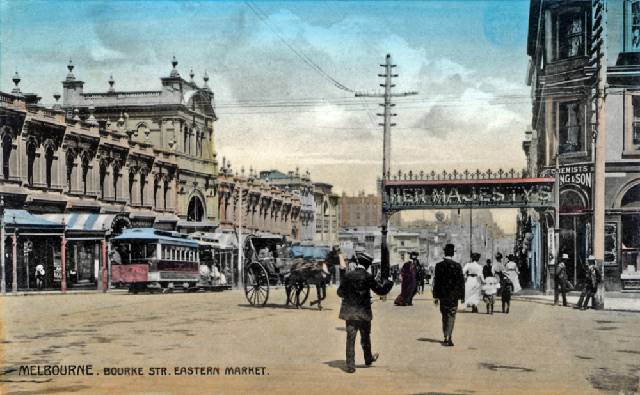
Due to long delays in establishing permanent capital at Canberra, Melbourne remained Australia's capital until 1927. This had important long-term consequences. Melbourne became the centre of the Commonwealth Public Service, the Australian Defence Forces, the diplomatic corps (very small until World War II), and also to a large extent of the legal profession, all of which reinforced the supremacy of Melbourne University and exclusive schools such as Scotch College, Melbourne Grammar School and Xavier College.
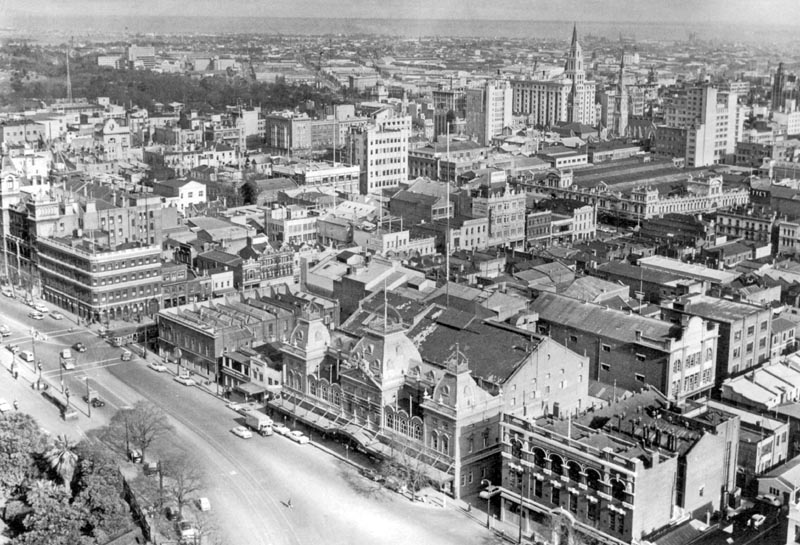

Interwar period

Melbourne's mood was also darkened by the terrible sacrifices of World War I, in which 112,000 Victorians enlisted and 16,000 were killed. There were bitter political divisions during the war, with Melbourne's Irish-born Catholic Archbishop Daniel Mannix leading opposition to conscription for the war and the Labor Party suffering a traumatic split. Another 4,000 Victorians died in the Spanish flu epidemic which followed the war. There was a modest revival of prosperity in the 1920s, and the population reached 1 million in 1930, but in 1929 the Wall Street Crash ushered in another Depression, which lasted until World War II.
During these years Melbourne acquired another great landmark, the Shrine of Remembrance in St Kilda Road, largely built by unemployed workers during the Depression. The population stagnated again, and was still only 1.1 million in 1940.

World War two
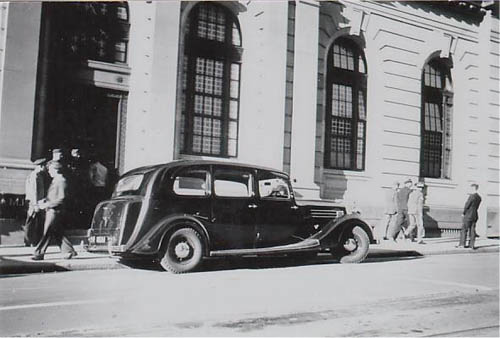
During World War II, although Canberra was officially the capital, most of the military and civilian administration was centered in Melbourne, and the city's economy benefited from wartime full employment and the influx of American service personnel (including General Douglas MacArthur, who made his headquarters in Collins St).

Organised crime was rife, with gang fights in the streets of Collingwood and underworld figures like Squizzy Taylor legendary. The Labor Party was much less successful in Melbourne than it was in Sydney and other Australian cities. Labor did not form a majority government in Victoria until 1952.
Post World War Two

After World War II, a new era of increasing prosperity arrived, fuelled by high prices for Victoria's wool, increased government spending on transport and education, and the stimulus of renewed high immigration. Unlike prewar immigration, which had been mostly from the British Isles, the postwar program brought an influx of Europeans, at first mostly refugees from eastern and central Europe. A large proportion of these immigrants were Jews, and the Jewish population of Melbourne became the largest population proportionally of any Australian city, at about 1.4% in 1970. [2] They were followed by migrants from Italy, Greece and the Netherlands.

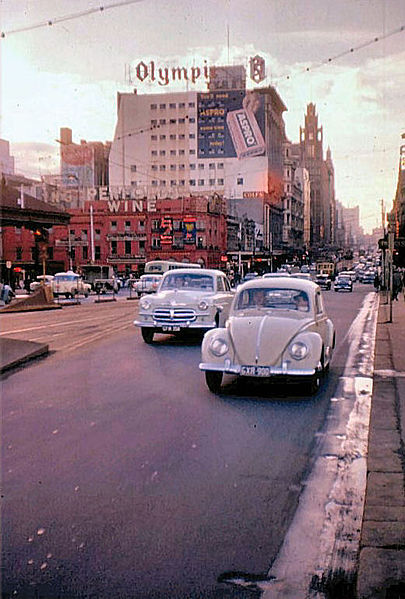
Later, in the 1960s, migrants came from Yugoslavia, Turkey and Lebanon. These inflows rapidly transformed the city's demographic profile and many aspects of its life. This new growth required new spending on infrastructure such as roads, schools and hospitals, which had been neglected during the long decades of recession and low growth between 1890 and 1940. Henry Bolte, Premier from 1955 to 1972, was responsible for much of this rapid development of infrastructure. Under Bolte, some of the old inner-city slums were bulldozed and the dislocated tenants were housed in high-rise blocks of state-owned apartments.
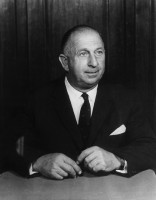
Since the 1970s, the pace of change in Melbourne has been increasingly rapid. The end of the White Australia Policy brought the first significant Asian migration to Melbourne since the gold rushes, with large numbers of people from Vietnam, Cambodia and China arriving. For the first time, Melbourne acquired a large Muslim population, and the official policy of multiculturalism encouraged Melbourne's various ethnic and religious minorities to maintain and celebrate their identities. At the same time, the practice of mainstream Christianity largely declined, leading to a secularisation of public life.

State patronage of the arts led to a boom in festivals, theatre, music and the visual arts. Tourism became a major industry, bringing still more foreign faces to Melbourne's streets. In 1956, the city became the first in the Southern Hemisphere to host the Olympic Games. Two new universities opened, Monash University in 1961 and La Trobe University in 1967, followed by others in the 1980s, maintaining Melbourne's place as a leader in tertiary education.
By the end of the 20th century Melbourne had 3.8 million people. The urban sprawl spread from Werribee in the south-west to Healesville in the north-east and encompassing much of the Mornington Peninsula and Dandenong Ranges to the south and east. A program of freeway construction was fast tracked in the 1970s and 1980s, while the expansion of rail and tram networks were neglected. These factors led to the rapid growth of the number and use of private cars.

Partly as a result of the increasing difficulty of traveling across the city, the central business centre declined, and satellite suburbs such as Frankston, Dandenong and Ringwood, and further out Melton, Sunbury and Werribee, became centres of manufacturing, retailing and administration. As a result, industrial employment in the old working class inner suburbs declined, with these areas rapidly gentrifying in the 1990s and 2000s.


1989 financial crash

These trends, along with cyclical recession and poor governance contributed to a financial crash in 1989, leading to the forced sale of one of Victoria's best-known symbols, the State Bank of Victoria. This was followed by a deep recession. Melbourne's population growth slowed during the early 1990s as employment contracted, with a rise in migration to other states such as Queensland.

In turn this recession contributed to the fall of Joan Kirner's Labor government and the election in 1992 of a radical free-market Liberal government under Jeff Kennett. Kennett's team restored Victoria's finances by making sweeping cuts to public expenditure, closing many schools, privatising the tramways and electricity production, and reducing the size of the public service. These reforms came at a high social cost, but ultimately restored confidence in Melbourne's economy and led to a resumption of growth. By 1999 Kennett was voted out, but key landmarks that his government commissioned, such as the Crown Casino, the Melbourne Exhibition and Convention Centre and the new Melbourne Museum, remain.


2000s
In the early years of the 21st century, Melbourne entered a new period of high economic and population growth under the more cautious Labor government of Steve Bracks, which restored public expenditure on health and education. As the city's suburbs continued to sprawl outwards, the Bracks government sought to restrict new suburban growth to designated growth corridors and encourage higher-density apartment living in the city's main transport hubs.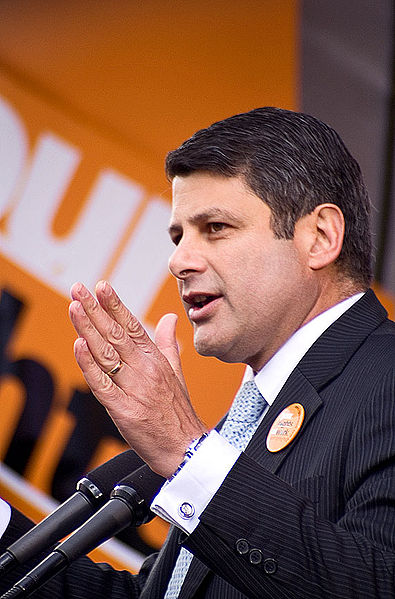
The city's Central Business District experienced a major resurgence in the 2000s, aided by a large increase in inner-city apartment living, the opening of new public spaces such as Federation Square and the new Southern Cross railway station, a determined marketing campaign by Lord Mayor John So's City Council and continuing development of the Southbank and Docklands precincts.

Since the late 2000s, population growth in Melbourne has been accelerating. Since the early 20th century, the city has been expanding outwards with low-density suburban urban forms to accommodate population growth. As this urban form is unsustainable, many sustainable alternatives have been proposed and implemented into policy to limit suburban sprawl, create transit-oriented urban environments and affordable housing and rent. However, in 2009 the Victorian Government announced plans to extend the city's urban growth boundary, potentially rezoning green wedges and agricultural land for housing development.[32]
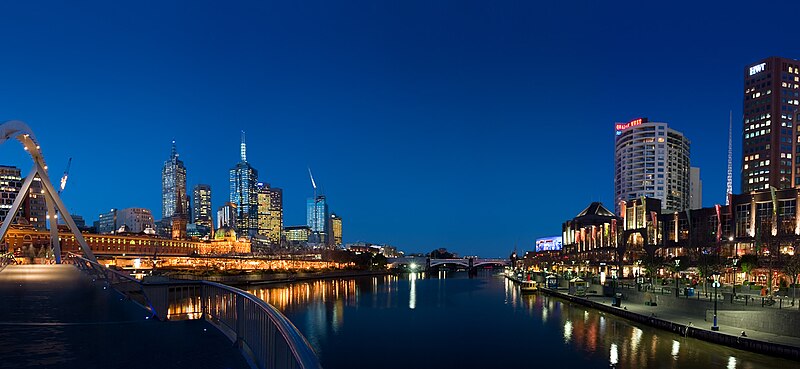
Since 1997, Melbourne has maintained significant population and employment growth. There has been substantial international investment in the city's industries and property market. Major inner-city urban renewal has occurred in areas such as Southbank, Port Melbourne, Melbourne Docklands and more recently, South Wharf. According to the Australian Bureau of Statistics, Melbourne sustained the highest population increase and economic growth rate of any Australian capital city in the three years ended June 2004.[33] The city survived the Global Financial Crisis better than any other Australian city, adding more jobs in 2009 than any other Australian city, almost as much as Brisbane and Perth combined, the 2nd and 3rd fastest growing cities.[34]

These factors combined has led to yet further suburban expansion through the 2000s into Green Wedges and beyond Urban Growth Boundaries, to accommodate the large population growth. Melbourne's property market is currently in a bubble,[35] with property largely expensive and unaffordable, and widespread rent increases.[36]

Despite lack of a progressive economy, general lack of government funding for public services such as public transport, and continued unsustainable urban growth, the city has seen sustained growth in its cultural institutions such as art, music, literature, performance, etc., as many contributors to and patrons of the arts relocate to Melbourne amongst excellent independent community support structures such as press and radio and a thriving cultural community. In 2003, Melbourne was named as a UNESCO City of Literature and the city hosts the majority of Australia's contemporary festivals, events and institutions, new galleries, music venues, museums, of all shapes and sizes are opening across the city.

From 2006, the growth of the city extended into "green wedges" and beyond the city's Urban growth boundary. Predictions of the city's population reaching 5 million people pushed the state government to review the growth boundary in 2008 as part of its Melbourne @ Five Million strategy.[37] Melbourne survived the financial crisis of 2007-2010 better than any other Australian city. In 2009, more new jobs were created in Melbourne than any other Australian capital - almost as many as the next two fastest growing cities, Brisbane and Perth, combined.[34] and Melbourne's property market remained strong,[38] resulting in historically high property prices and widespread rent increases.[39]


In February 2010, The Transition Decade, an initiative to transition human society, economics and environment towards sustainability, was launched in Melbourne.[40]

Taken from: http://en.wikipedia.org/wiki/History_of_Melbourne [30.08.2013]
